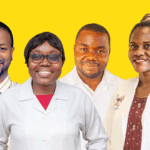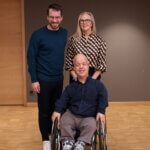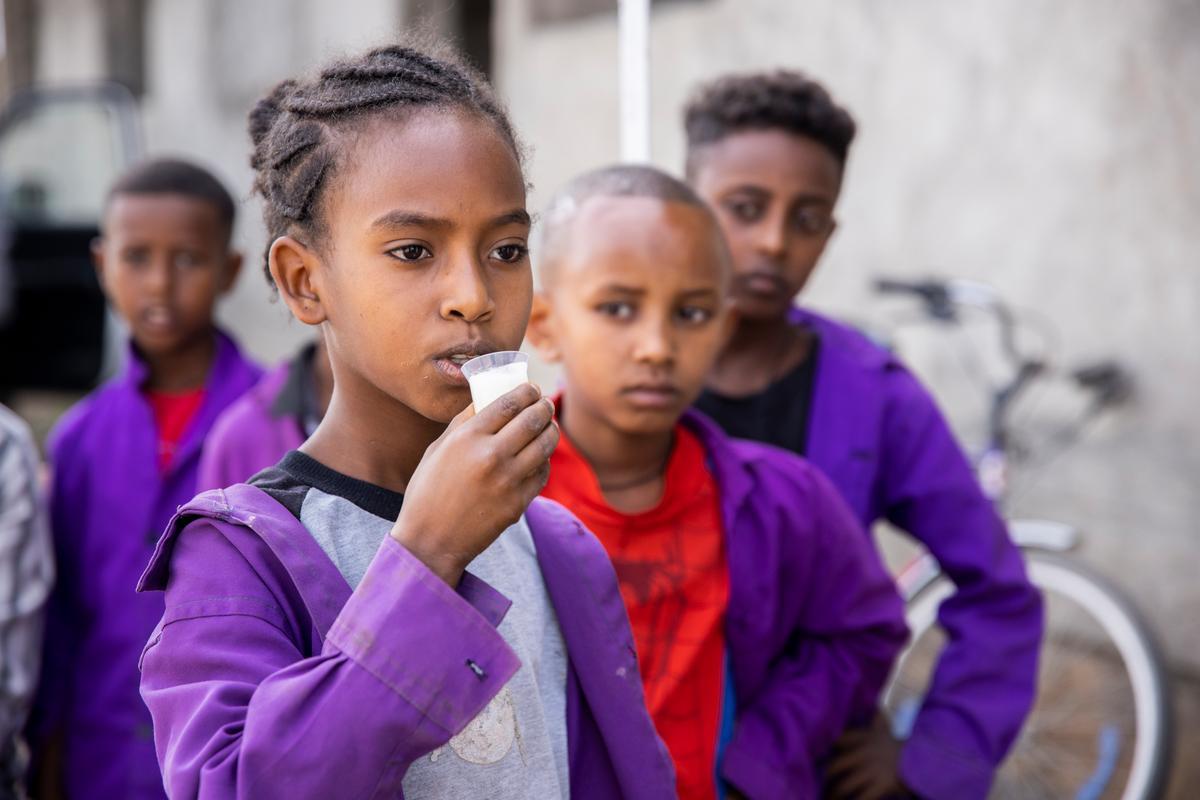- General
- Eye Health
This World Sight Day, on 9 October 2025, we celebrate the success of the “1, 2, 3 I Can See!” child eye health programme and spotlight four pioneering paediatric ophthalmologists in Burkina Faso, Ethiopia, Mozambique and Uganda.
They are the trailblazers leading the drive to save children’s eyesight in their countries.
Dr Claudette Yaméogo, in Burkina Faso, Dr Dagmawi Abebe, in Ethiopia, Dr Isaac Vasco da Gama, in Mozambique, and Dr Rebecca Lusobya, in Uganda — all are dedicating their working lives to child eye health.
“1, 2, 3 I Can See!” – a milestone for child eye health in Africa
The paediatric ophthalmologists were supported to specialise in child eye health under Light for the World’s “1, 2, 3 I can see!” programme.
It is an ambitious, 10-year initiative to sustainably improve child eye health services in Burkina Faso, Ethiopia, Mozambique and Uganda, working directly with Ministries of Health and other important stakeholders.
“1, 2, 3 I can see!” advocates for promotion of eye health in schools and works to reinforce healthcare systems, improving early detection and provision of quality eye care services for children.
Through the programme, Light for the World has reached more than half a million children, supported 3,500 eye surgeries and trained 1,850 teachers to detect potential eye health problems.
Meet the child eye health pioneers
The success of “1, 2, 3 I Can See!” is built on the expertise and dedication of paediatric ophthalmologists who are driving progress in child eye health across Africa.
Leaders in their field, they provide essential care and strengthen national health systems, train the next generation of specialists and advocate for the importance of early detection and treatment.
Dr Claudette Yaméogo is leading efforts to build sustainable child eye health services in Burkina Faso:
“There is a significant need to train more paediatric ophthalmologists to build a multidisciplinary team, including specialists such as retinal specialists and oculoplastic surgeons.”
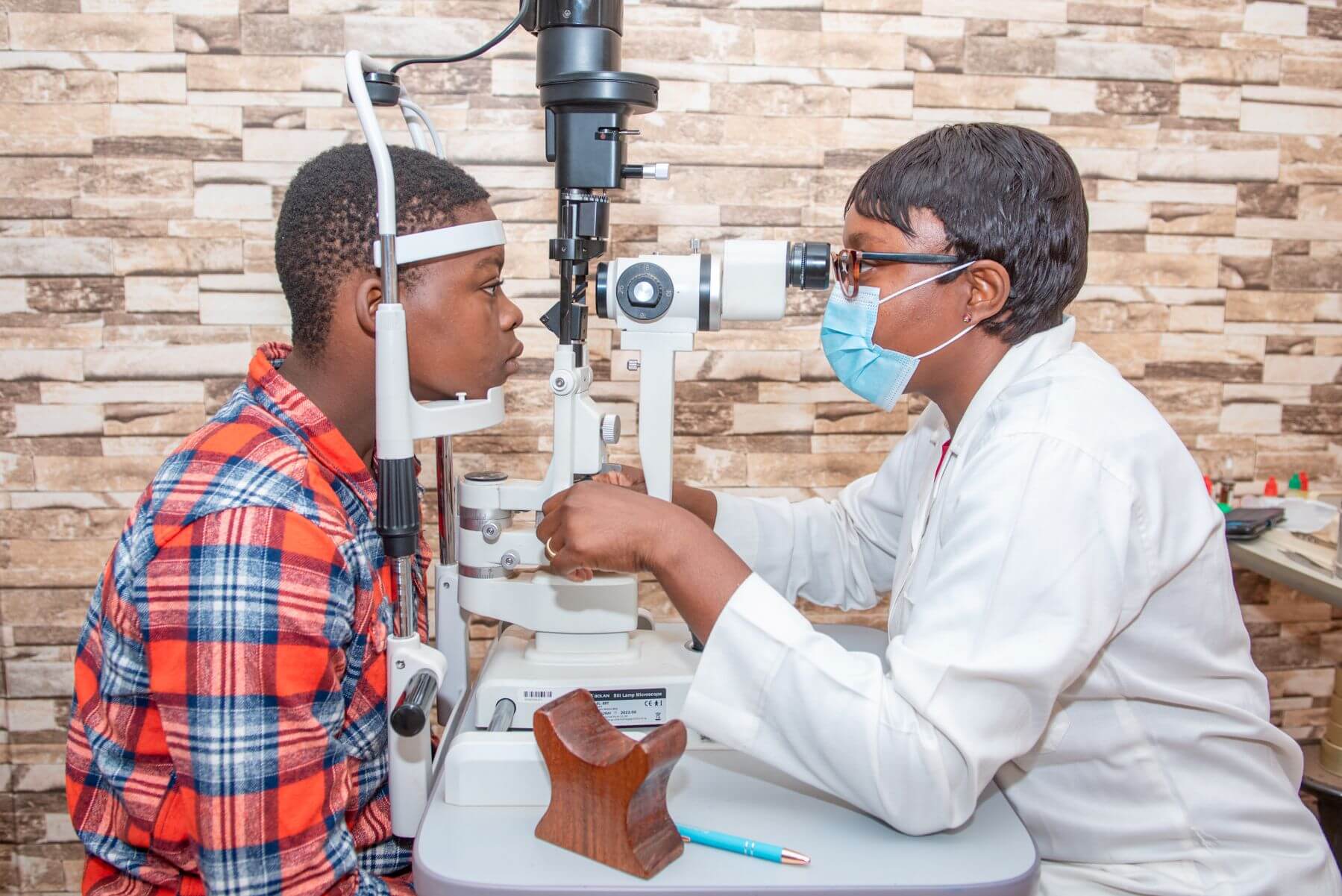
Dr Dagmawi Abebe, who treats about 150 children a week, sees a path to improve child eye health in Ethiopia:
“The first priority is making good infrastructure for paediatric patients and surgical eye care. And the second is providing consistent and timely training for paediatric ophthalmologists, optometrists and nurses.”
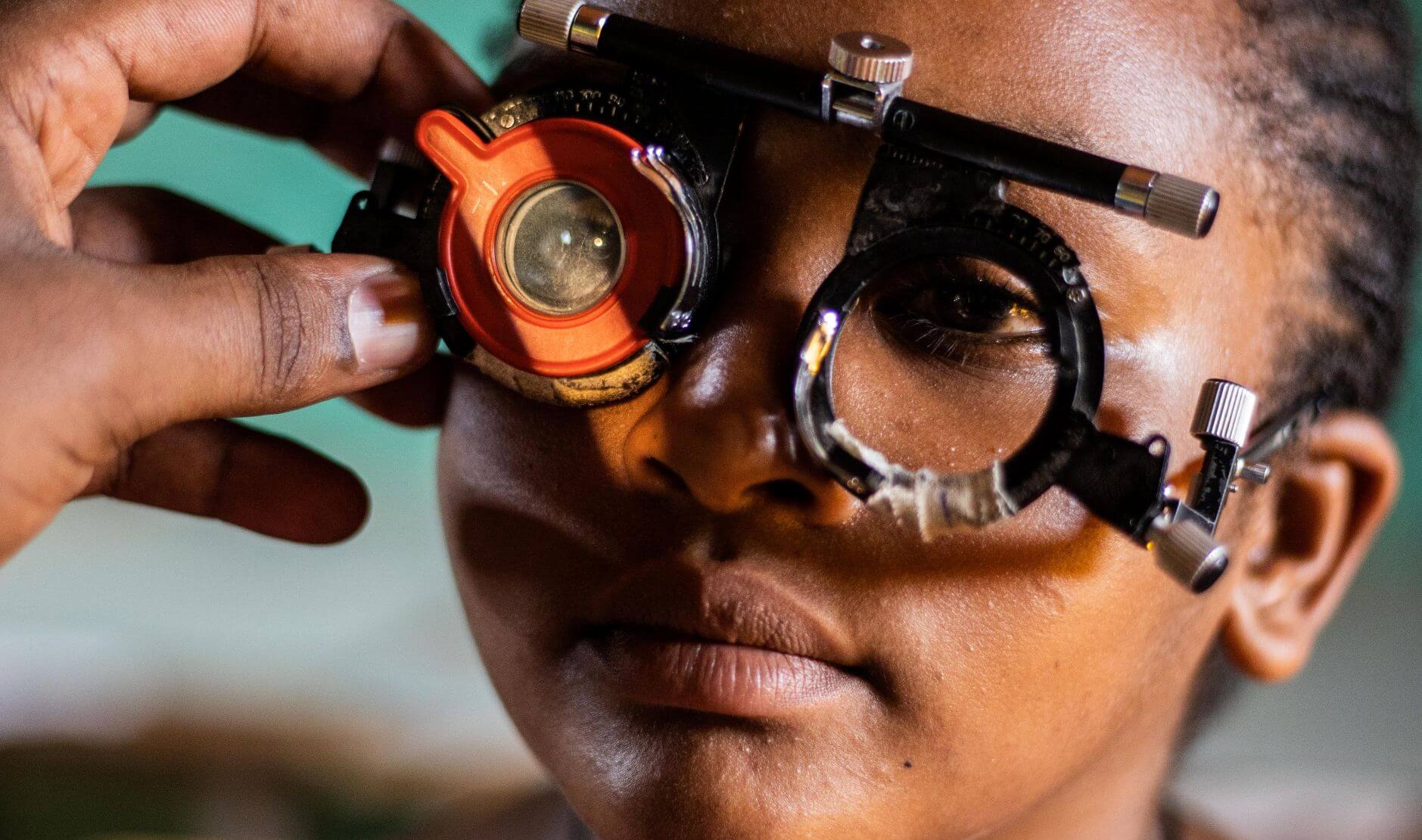
Dr Isaac Vasco da Gama, the first paediatric ophthalmologist in Mozambique, is undaunted by the challenge of being one of the country’s few child eye health specialists:
“People come from all over the country to see me and that is really great. For me I’m happy, because I save the vision of kids.”
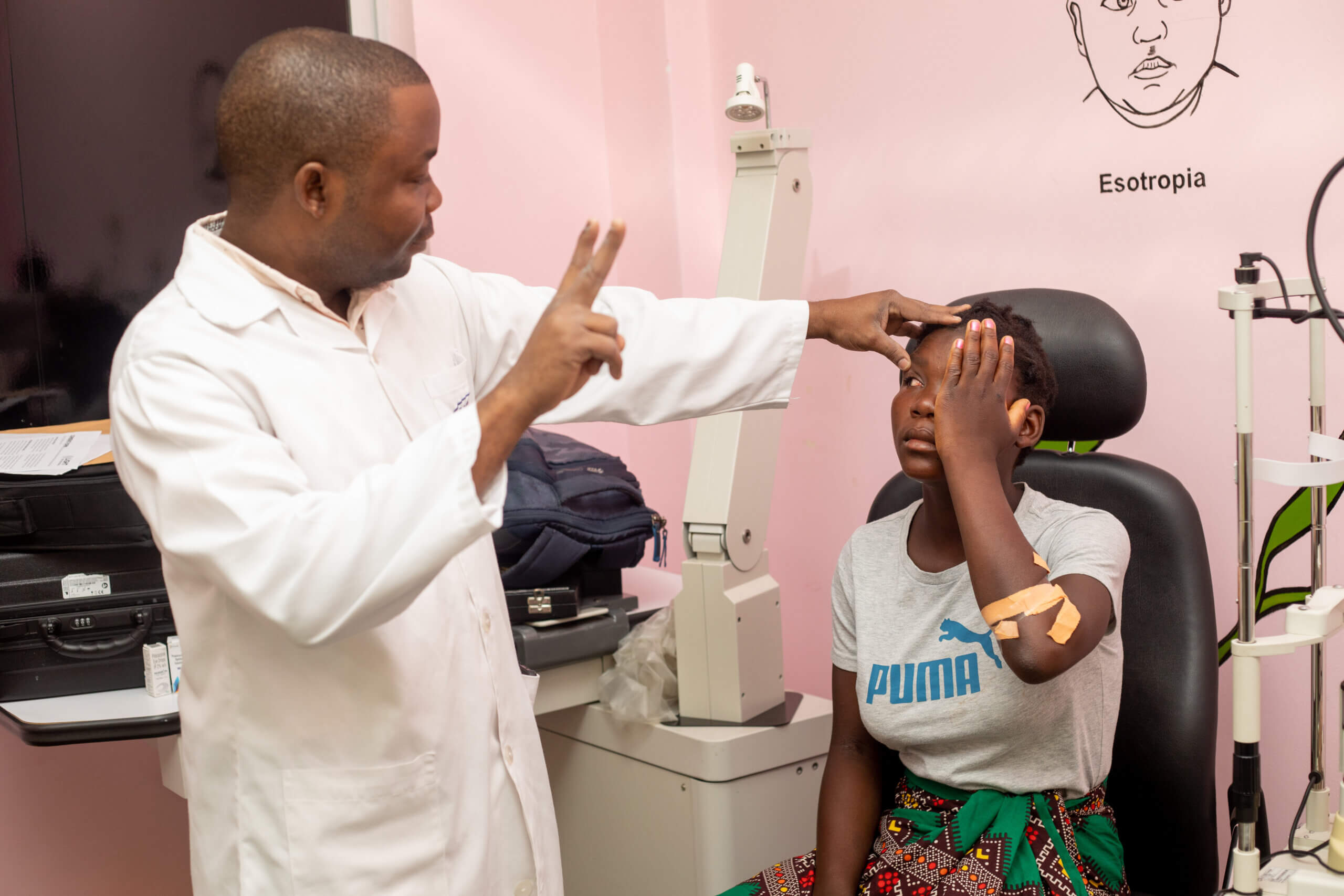
Dr Rebecca Lusobya is dedicated to preventing childhood blindness in Uganda through surgery, research and training the next generation of ophthalmologists:
“My vision is clear: we need better equipment, more specialists and widespread advocacy to ensure every child and every person in Uganda gets the eye care they deserve.”
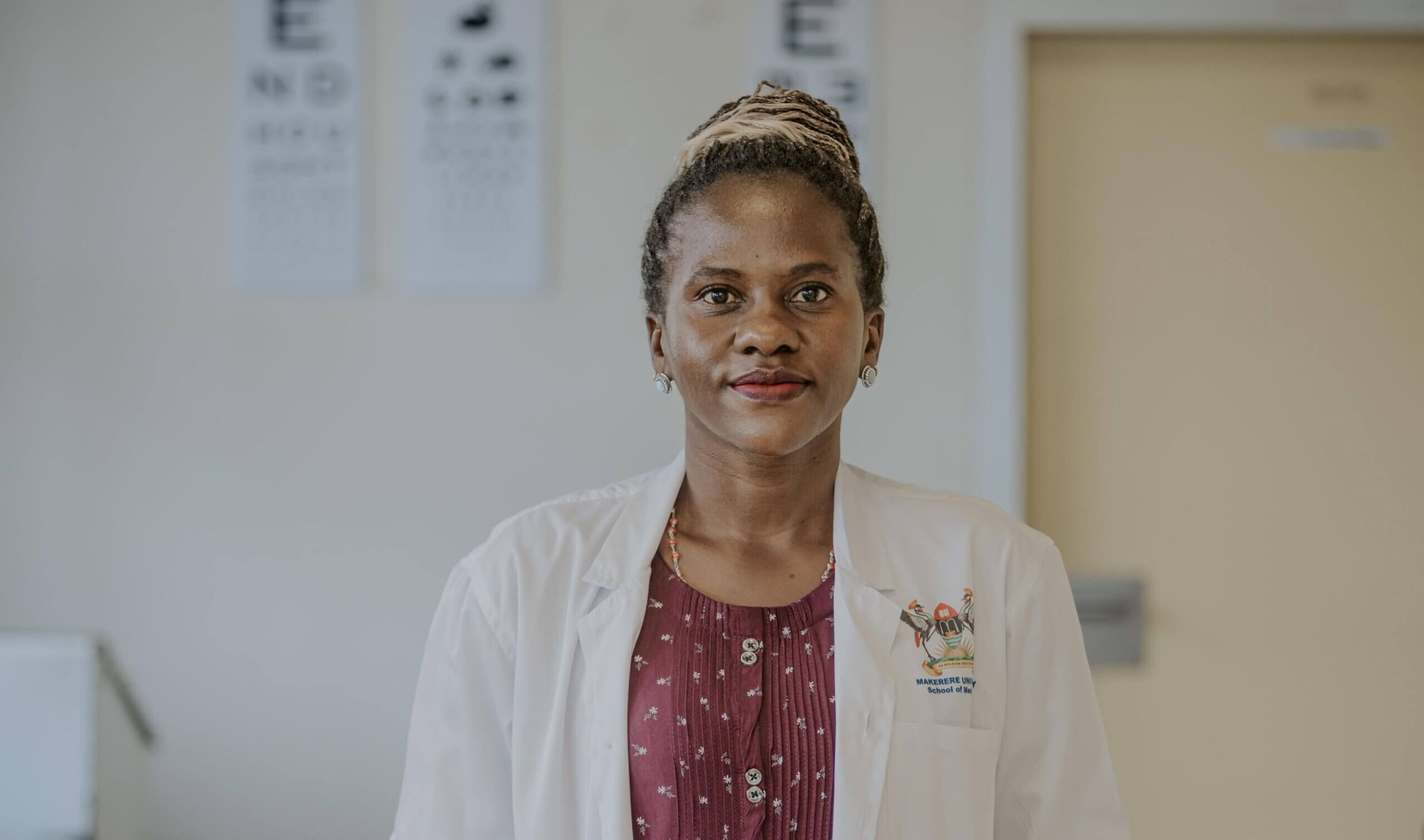
Investing in child eye health
Globally, 40% of children are blind from eye conditions that could be managed or prevented with access to eye care services, according to the International Agency for the Prevention of Blindness.
Funding makes it possible to train specialist medical staff, equip clinics and reach children early with sight-saving treatment. Improving child eye health services also contributes to overall strengthening of healthcare systems.
Early investment not only protects a child’s vision but also opens the door to education, independence and more lifetime opportunities. It leads to better educational achievement and healthier children.
There is also a strong economic argument for investing in child eye health. The Value of Vision report published by IAPB, Seva Foundation and Fred Hollows Foundation, and supported by Light for the World, found eye health was one of the most powerful global health opportunities for low and middle-income countries. For every US$1 invested, there is a US$28 return.
Targeted investment in eye health interventions like cataract surgeries and reading glasses would return US$447 billion annually to the global economy.
Dr Geoffrey Wabulembo, Senior Expert, Eye Health, at Light for the World, says: “We are proud to celebrate these pioneering paediatric ophthalmologists and their tireless dedication to child eye health on World Sight Day.
“Their work is living proof that investing in people and systems works, and we are committed to continue working alongside national ministries of health as part of the “1, 2, 3 I Can See!” programme. Under the programme, more children are being treated, more doctors trained and stronger health systems are emerging.
“Sustaining and scaling this progress requires long-term commitment. With continued support from partners and funders, we can ensure that every child — no matter where they are born — has the chance to see, learn, and fulfil their maximum potential.”
